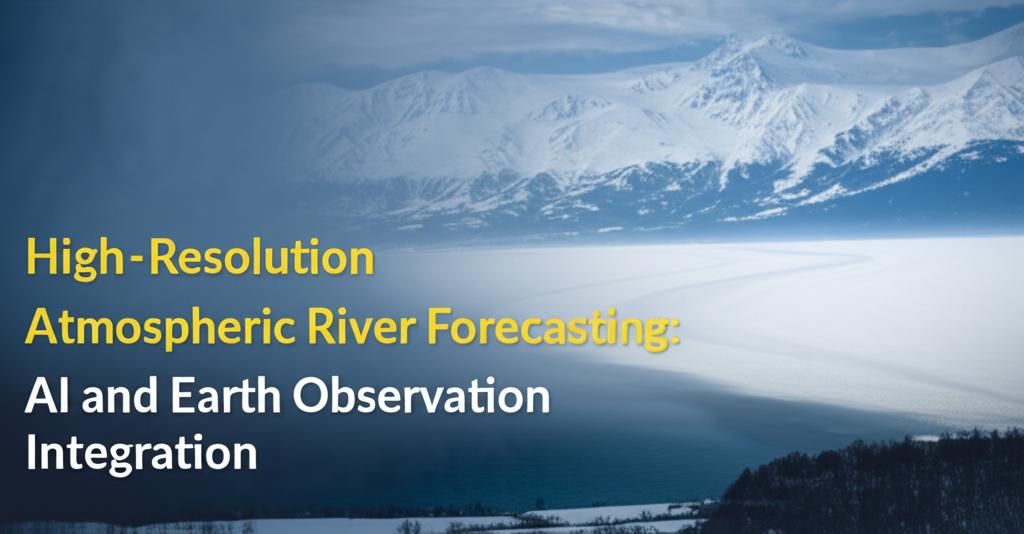Atmospheric rivers (ARs), those vast corridors of airborne moisture, are critical to the water supply of regions like the U.S. West Coast but also culprits in severe flooding. Accurately forecasting these weather phenomena is paramount for water resource management and public safety, especially as climate change is projected to intensify them. A new era of high-resolution AR forecasting is dawning, driven by the powerful synergy of Artificial Intelligence (AI) and Earth Observation (EO).
The latest advancements focus on leveraging AI, particularly machine learning (ML) and deep learning (DL) algorithms, to process vast amounts of data from various EO sources. These sources include geostationary satellites like NOAA's GOES series and polar-orbiting satellites like the Joint Polar Satellite System (JPSS), which provide continuous monitoring and high-resolution data on water vapor, cloud structure, and other atmospheric variables. Ground-based observations and data from reconnaissance aircraft missions, which deploy instruments called dropsondes directly into ARs, further enrich these datasets.
AI models are proving adept at identifying and tracking ARs, even outperforming traditional numerical weather prediction (NWP) models in some aspects. For instance, Google's GraphCast, an AI model, has demonstrated unprecedented accuracy in 10-day global weather forecasting, including the identification of ARs associated with flood risk. These AI-driven approaches can process complex data faster and more efficiently than conventional methods. Some new AI models, like ARDetect, use deep learning for image segmentation of ARs, achieving high accuracy and significantly faster execution times compared to older methods.
The integration of AI with EO data is not just about speed; it's about enhancing the precision and lead time of forecasts. Researchers are developing hybrid forecasting systems that blend the strengths of physics-based NWP models with data-driven AI techniques. This allows for more detailed and localized predictions. For example, new AI approaches have been shown to improve forecast accuracy for some variables by 10-20%, potentially adding one to two extra days of warning before an AR makes landfall.
High-resolution modeling is a key component of this progress. Nested grid approaches in forecast systems allow for more detailed predictions in specific regions, like the eastern Pacific Ocean and the continental U.S. Supercomputers, such as the AWARE system at the San Diego Supercomputer Center, are providing the necessary computational power to run these high-resolution ensemble numerical models and keep pace with the latest AI developments.
Furthermore, AI is being used to improve the assimilation of observational data into forecast models. Some novel AI-based regional high-resolution weather forecasting models are even designed to make predictions directly from observational data, bypassing the need for traditional data assimilation processes in some cases. This can reduce uncertainties and enhance forecast accuracy, particularly for short-term predictions.
The ongoing development includes training AI/ML models with data from new, nested high-resolution models, aiming to create direct replacements for computationally expensive atmospheric components in forecasting systems. This will significantly reduce the computational cost of AR forecasting and data assimilation. Efforts are also underway to improve subseasonal-to-seasonal (S2S) prediction of ARs, a challenging timescale due to complex climate interactions and observational limitations. AI models are well-suited to tackle these challenges by handling multiple climatic controls and their nonlinear impacts on AR activity.
In summary, the integration of AI and Earth Observation is revolutionizing high-resolution atmospheric river forecasting. This powerful combination is leading to more accurate, timely, and actionable forecasts, which are crucial for mitigating the risks associated with these impactful weather events and for better managing vital water resources. As AI algorithms become more sophisticated and EO data becomes richer and more accessible, we can expect continued advancements in our ability to predict and prepare for atmospheric rivers.

